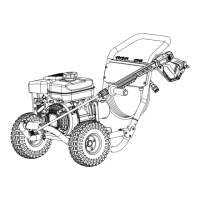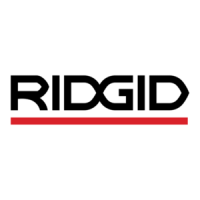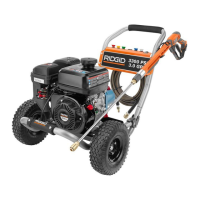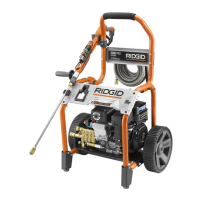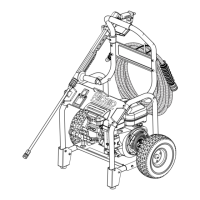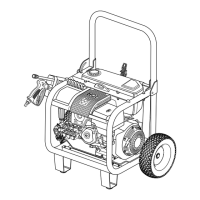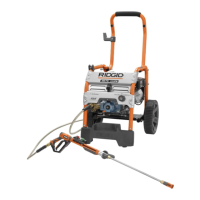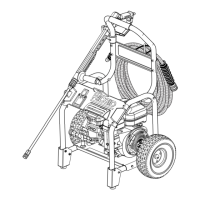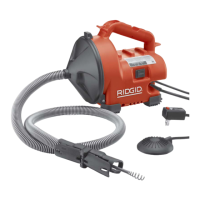Do not use E15 or E85 fuel
(or fuel containing greater
than 10% ethanol) in this
product. It is a violation of federal law and will
damage the unit and void your warranty.
Ne pas utiliser d’essence E15 ou E85 (ou un
carburant contenant plus de 10 % d’éthanol)
dans ce produit. Une telle utilisation représente
une violation de la loi fédérale et endommagera
l’appareil et annulera la garantie.
No utilice combustibles E15 o E85 (ni combustibles
que contengan más de 10 % de etanol) con este
producto. Esto constituye una violación a la ley
federal, dañará la unidad y anulará la garantía.
OPERATOR’S MANUAL
MANUEL D’UTILISATION
MANUAL DEL OPERADOR
3000 PSI PRESSURE WASHER
NETTOYEUR HAUTE PRESSION
DE 3 000 PSI
LAVADORA A PRESIÓN
DE 3 000 PSI
RD80944
To register your RIDGID
product, please visit:
http://register.RIDGID.com
Pour enregistrer votre
produit de RIDGID, s’il
vous plaît la visite:
http://register.RIDGID.com
Para registrar su producto
de RIDGID, por favor visita:
http://register.RIDGID.com
Your pressure washer has been engineered and manufactured to our high standard for dependability, ease of operation, and
operator safety. When properly cared for, it will give you years of rugged, trouble-free performance.
WARNING: To reduce the risk of injury, the user must read and understand the operator’s manual before using this
product. If you do not understand the warnings and instructions in the operator’s manual, do not use this product.
Ce nettoyeur haute pression à essence a été conçu et fabriqué
conformément à nos strictes normes de fiabilité, simplicité d’emploi
et sécurité d’utilisation. Correctement entretenu, cet outil vous
donnera des années de fonctionnement robuste et sans problème.
AVERTISSEMENT :
Pour réduire les risques de blessures, l’utilisateur doit
lire et veiller à bien comprendre le manuel d’utilisation
avant d’employer ce produit. Si tous les avertissements
et toutes les consignes de sécurités et instructions du
manuel d’utilisation ne sont pas bien compris, ne pas
utiliser ce produit.
Su lavadora de presión de gasolina ha sido diseñado y fabricado de
conformidad con nuestras estrictas normas para brindar fiabilidad,
facilidad de uso y seguridad para el operador. Con el debido cuidado,
le brindará muchos años de sólido funcionamiento y sin problemas.
ADVERTENCIA:
Para reducir el riesgo de lesiones, el usuario debe leer y
comprender el manual del operador antes de usar este
producto. Guarde este manual del operador y estúdielo
frecuentemente para lograr un funcionamiento seguro y
continuo de este producto
CONSERVER CE MANUEL POUR
FUTURE RÉFÉRENCE
GUARDE ESTE MANUAL PARA
FUTURAS CONSULTAS
SAVE THIS MANUAL FOR FUTURE REFERENCE
NOTICE AVIS AVISO
